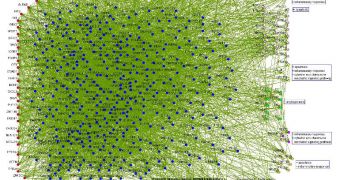In a set of recent investigations, researchers determined that a large number of developmental brain abnormalities, which have until now been considered to be different disorders, are actually related.
Traditionally, all of these conditions were considered to be separate from each other, but the new evidence seems to indicate that they share the same genetic root.
The research team that conducted the new study used an investigations technique known as whole exome sequencing, which allowed them to identify the mutation responsible for triggering the brain disorders.
The investigation was conducted by experts at the Yale University, with funding provided by the US National Institutes of Health (NIH).
The scanning technique the team used may in the near future be used to save time and money, as researchers continue to investigate various diseases for their underlying, genetic causes.
“This is going to change the way we approach single-gene disorders,” explains Murat Gunel, MD, quoted by e! Science News.
His is the co-director of the Yale Program on Neurogenetics, and the chief of the Neurovascular Surgery Program at the university.
The NIH National Institute of Neurological Disorders and Stroke (NINDS) provided the money the Yale group needed, through a $2.9 million stimulus grant secured via the American Recovery and Reinvestment Act of 2009.
“This study demonstrates a powerful new tool for discovering the cause of tough-to-crack genetic disorders. It also exemplifies how Recovery Act support to the NIH community is successfully driving biomedical technology and innovation,” says Story Landis, PhD. He is also the director of NINDS.
According to Gunel, the investigation focused on a series of conditions known collectively as malformations of cortical development (MCD), all of which affect children.
People suffering from MCD tend to have insufficiently-developed folds inside the cerebral cortex, which is the outermost layer of the human brain.
This means that a host of cognitive capabilities and other cerebral features, which were supposed to be inscribed at these locations, are not available to that particular individual.
One of the main side-effects children display include severe intellectual disabilities, as well as the inability to reach certain developmental milestones, that are of critical importance.
Gunel says that he is surprised at one aspect of the findings, and namely the fact that a single gene “is required for strikingly diverse aspects of human cortical brain development.”

 14 DAY TRIAL //
14 DAY TRIAL //